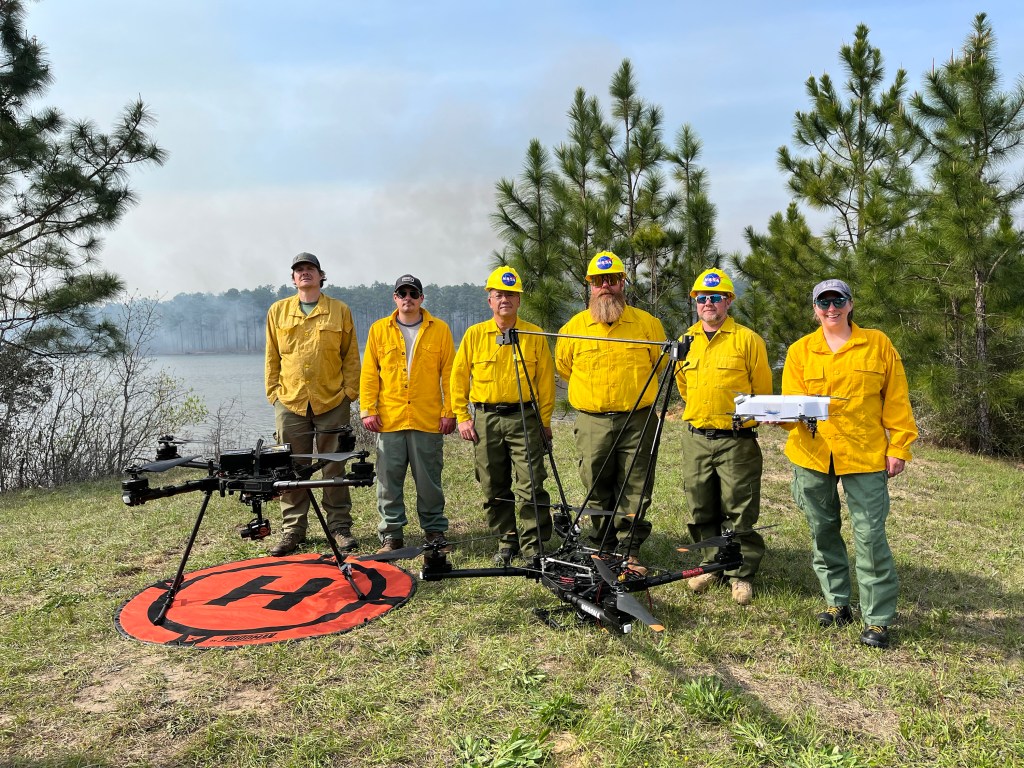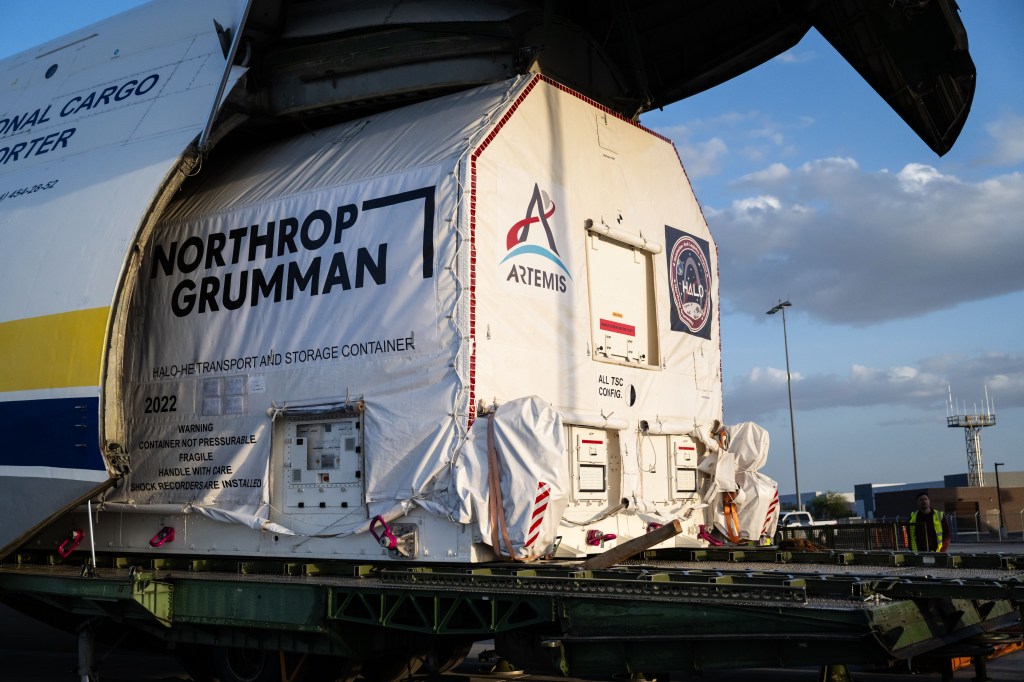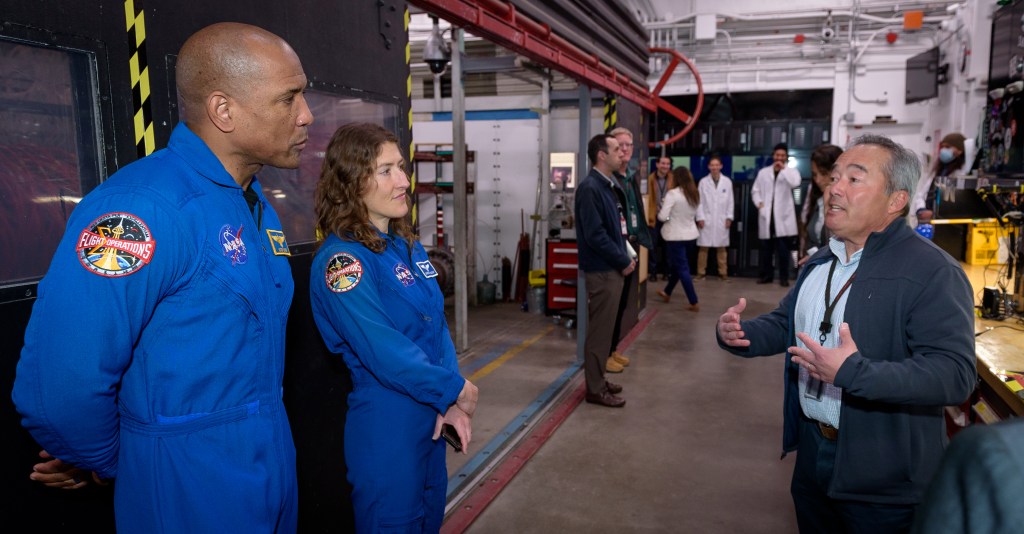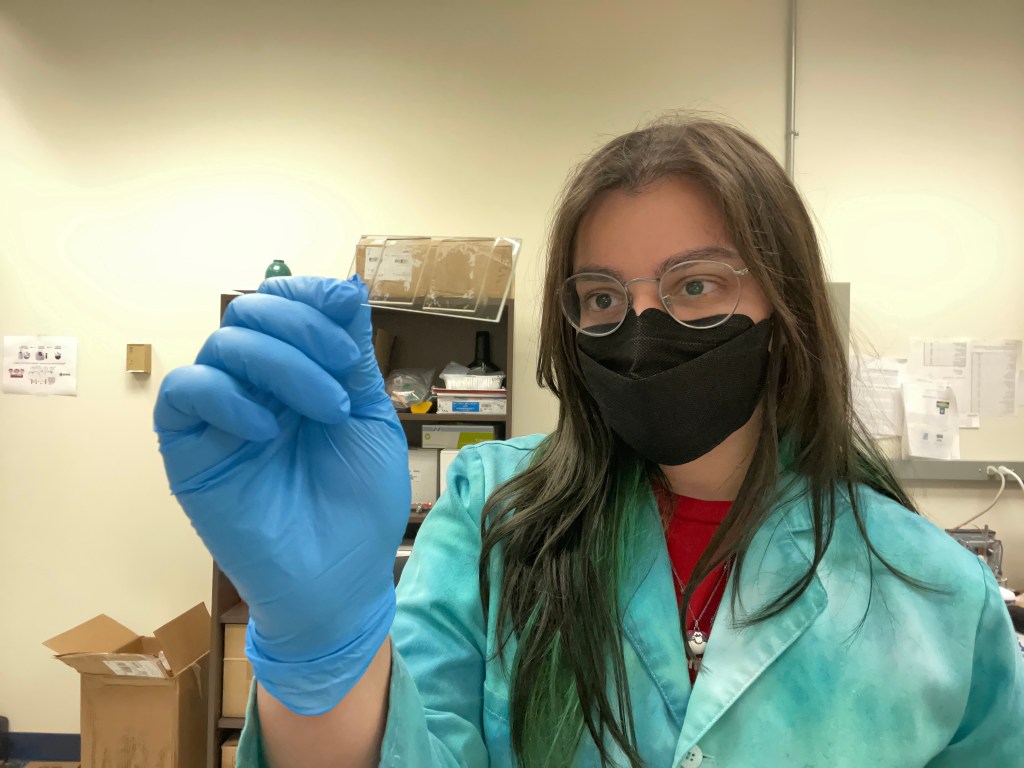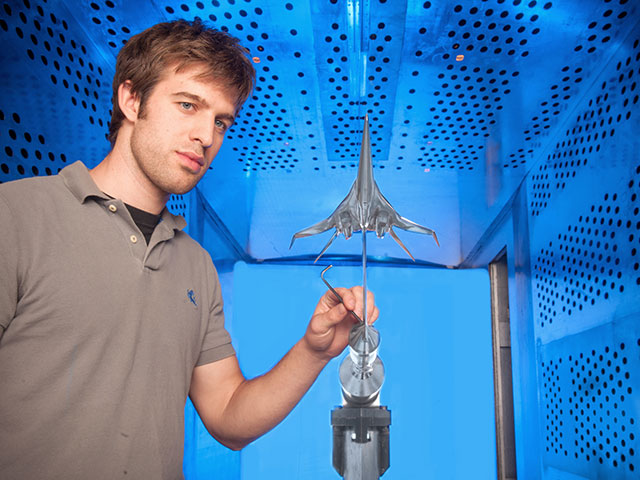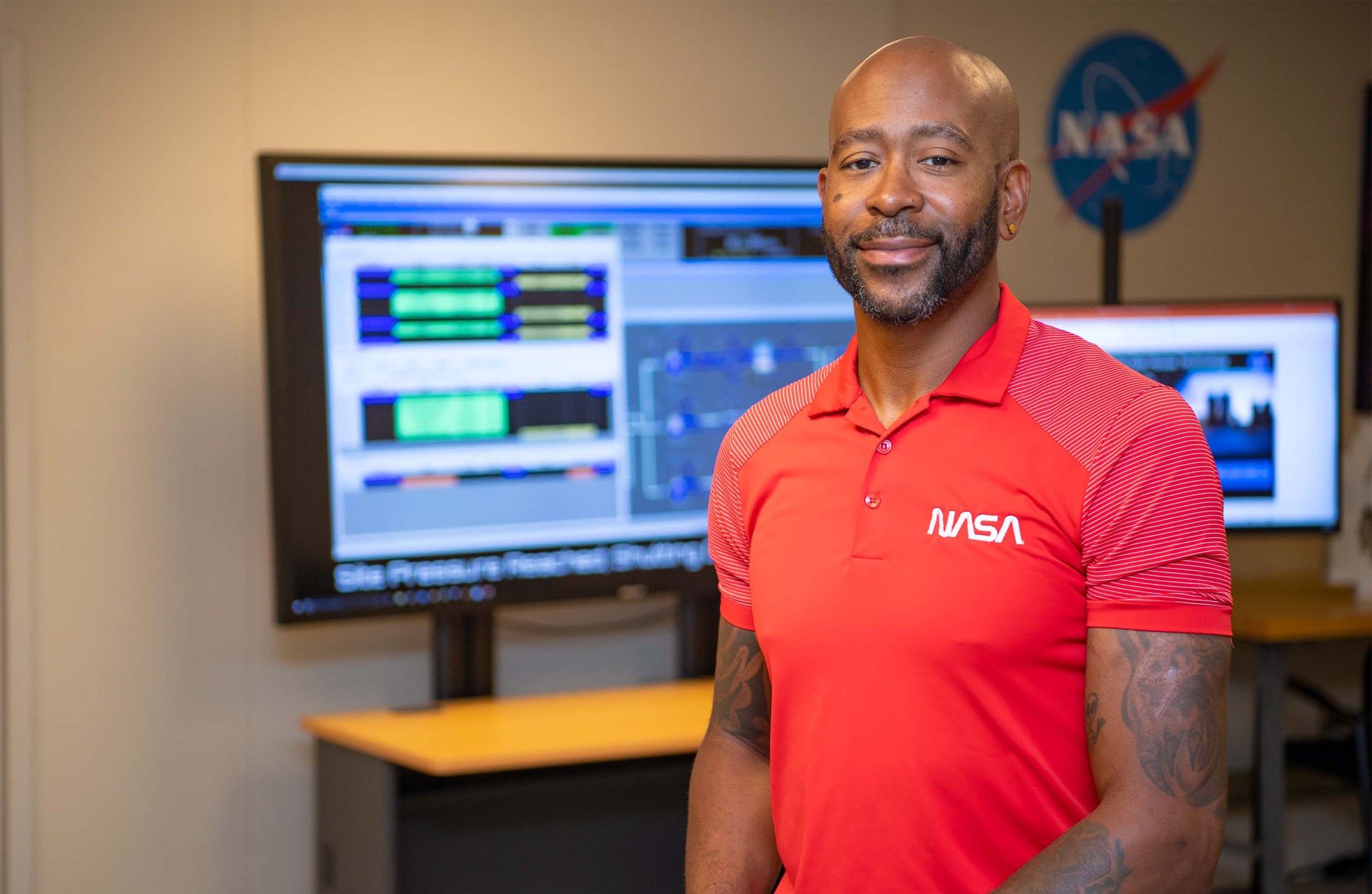I Am NASA Stennis: Travis Martin
When Travis Martin was in the third grade, he asked his teacher if he could make a class presentation on his most passionate subject – space. Once the teacher gave permission, Martin told his classmates everything he knew about space, stars, planets, and moons.
He concluded his impromptu presentation by announcing he would become an astronaut or rocket scientist one day.
“I guess I really did reach my childhood dream job,” said Martin, a technical project manager in the Office of Technology Development at NASA’s Stennis Space Center near Bay St. Louis, Mississippi. “As far back as I can remember, I have been a bit of tinkerer and investigator.”
Born at Fort Benning in Columbus, Georgia, Martin currently lives in the Gentilly neighborhood of New Orleans. He has been with NASA for over 17 years and transitioned through three NASA centers before landing at Stennis 11 years ago.
Martin began his NASA career at Marshall Space Flight Center in Huntsville, Alabama, as an aerospace materials test engineer. He also worked as the manufacturing operations lead for the space shuttle external tank program at NASA’s Michoud Assembly Facility in New Orleans, as a systems engineer at NASA’s Jet Propulsion Laboratory in California near Los Angeles, and as a systems engineer at Stennis before moving to his current position.
Martin’s current role includes project management at Stennis’s High-Pressure Gas Facility and E-3 Test Stand. He also serves as the information security owner for Stennis’s Autonomous Systems Laboratory.
Most notably, Martin serves as mission operations lead for the Stennis ASTRA (Autonomous Satellite Technology for Resilient Applications) project. The headline project will demonstrate the NASA Platform for Autonomous Systems developed at Stennis during a satellite mission scheduled to launch this fall.
ASTRA represents the first-ever “flight” project for Stennis. It was one of only 10 proposals chosen as part of NASA’s Project Polaris, which is focused on providing new technologies and capabilities needed for extended deep space missions to the Moon and, eventually, Mars. For instance, the ASTRA mission developed by Stennis space Center will demonstrate integrated systems health management capabilities essential to NASA’s Gateway orbiting lunar outpost and human landing system.
Project Polaris represents an opportunity to build the expertise of early-career employees to support future human exploration missions. It also poses challenges for Martin and his team.
“Managing the risks associated with the integration of semi-autonomous software systems with the rigorous standards for human-rated flight projects is one of the biggest challenges my team and I have been working through since the onset of the Artemis campaign,” he explained. “In many cases, the standards for implementation such systems do not exist and must be developed with key stakeholders from across the agency.”
Martin said he is excited not only to be part of the ASTRA effort but to play a role in expanding software development capabilities at Stennis. “Stennis has always had capabilities outside of propulsion testing,” he said. “I am glad to see these capabilities now being recognized by others outside the center.”
ASTRA is not the first exciting project for Martin, however. Early in his career, he was involved in Return to Flight efforts following the loss of the space shuttle Columbia in 2003. A couple of years later, he was among many others impacted by Hurricane Katrina, which hit the Louisiana-Mississippi coast in August 2005. Martin was part of a small team that helped NASA’s Michoud Assembly Facility in New Orleans deliver a needed space shuttle external tank ahead of schedule despite the storm’s impact.
Martin counts this post-Katrina work as one of his proudest work accomplishments. “If my team was not working on the fuel tank, we were helping one another pick up the pieces and gut our flooded-out houses,” he said. “The bond I made with those individuals remains strong to this day, and we tell that story every time we meet.”
Most recently, Martin also served as a systems engineer during the renovation of the B-2 Test Stand and the Green Run testing of the first Space Launch System core stage at Stennis. The Green Run test campaign concluded on March 18, 2021, with a hot fire test of the core stage’s four RS-25 engines firing simultaneously, just as during an actual launch.
“It was not only an amazing experience to participate in such an endeavor but an opportunity to take part in the rich history of large-scale test projects,” Martin said. “The satisfaction of working to restore and utilize test structures used by some of the most brilliant engineering minds is something more than a few often overlook.”
We celebrate the people and the experience of having them in our lives more so here (at NASA Stennis) than anywhere else I know.
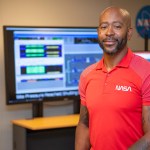
travis martin
Technical Project Manager
In terms of satisfaction, Martin considers the family atmosphere and culture at Stennis as one of the best things about working at the south Mississippi propulsion test center. “We celebrate the people and the experience of having them in our lives more so here than anywhere else I know,” he said.
Stennis also has made “significant improvements in cultivating a more diverse work environment,” Martin said. “When I first came to Stennis, I was likely to be the only minority male at a meeting or event on any given day, and I cannot say that in 2022. I am also pleased to see more women in leadership roles today. Diversity and inclusion are an ever-evolving process, but I feel Stennis is doing its part.”
For information about Stennis Space Center, visit Stennis Space Center.


